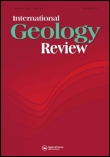
INTERNATIONAL GEOLOGY REVIEW
Scope & Guideline
Connecting researchers to the forefront of geological innovation.
Introduction
Aims and Scopes
- Tectonic Evolution and Geodynamics:
Research articles often explore the tectonic history and geodynamics of various geological settings, including orogenic belts, fault systems, and the interaction of tectonic plates, providing insights into the processes driving continental formation and destruction. - Petrogenesis and Magmatism:
The journal frequently publishes studies on the petrogenesis of various rock types, particularly igneous and metamorphic rocks, examining their formation, mineral composition, and the geochemical processes involved. - Geochronology and Isotope Geochemistry:
A significant focus is placed on dating geological events and understanding the timing of tectonic, magmatic, and metamorphic processes through advanced geochronological techniques and isotopic analyses. - Mineral Resources and Economic Geology:
The journal covers topics related to mineral exploration, resource potential, and the economic implications of geological findings, particularly in relation to critical metals and sustainable resource management. - Paleoenvironments and Sedimentary Processes:
Research often discusses sedimentary processes and paleoenvironments, providing context for understanding the geological history and stratigraphic evolution of various regions. - Geological Hazards and Environmental Geology:
The journal includes studies on geological hazards, such as earthquakes and volcanic activity, as well as the environmental implications of geological processes, emphasizing sustainability and ecological engineering. - Geological Mapping and Spatial Analysis:
The use of geospatial analysis and geological mapping techniques to understand complex geological structures and their spatial relationships is a core methodological approach in many published studies.
Trending and Emerging
- Sustainable Resource Management and Circular Economy:
An increasing number of articles focus on sustainable practices in mineral extraction and the circular economy, emphasizing the importance of minimizing waste and maximizing resource recovery. - Advanced Geochemical Techniques and Data Integration:
There is a notable trend towards the use of advanced geochemical techniques, including isotopic studies and high-resolution geochronology, to provide detailed insights into geological processes. - Climate Change and Geological Impacts:
Research exploring the geological implications of climate change, including sedimentary responses and resource management, is on the rise, reflecting a growing concern for environmental sustainability. - Technological Innovations in Geology:
Emerging technologies such as remote sensing, GIS, and 3D geological modeling are increasingly featured, showing a trend towards integrating technology into geological research and exploration. - Interdisciplinary Studies:
There is a growing emphasis on interdisciplinary research that combines geology with other fields such as biology, ecology, and environmental science, facilitating a more holistic understanding of geological phenomena.
Declining or Waning
- Paleoclimatology and Paleoenvironments:
Research on ancient climates and paleoenvironments has become less prominent, possibly due to a shift towards more immediate geological applications and contemporary environmental issues. - Volcanology and Eruption Dynamics:
Although still present, detailed studies specifically focusing on eruption dynamics and volcanic processes appear to be waning, as the journal leans towards broader tectonic and geodynamic themes. - Geological Education and Public Engagement:
Papers addressing geological education and outreach efforts seem to be decreasing, which may reflect a trend towards more technical and specialized research topics. - Geological History of Lesser-known Regions:
There has been a noticeable reduction in studies focused on less-explored geological regions or historical geological events, possibly due to a greater emphasis on well-studied areas with significant data availability.
Similar Journals
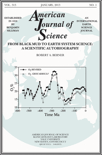
AMERICAN JOURNAL OF SCIENCE
Elevating Scientific Discourse in Earth and Planetary SciencesThe American Journal of Science, published by the esteemed Amer Journal Science, stands as a leading platform for groundbreaking research in the field of Earth and Planetary Sciences. With an impressive impact factor and distinguished Scopus rank 34/195 in its category, the journal occupies a prestigious position in the academic community, reflecting its high-quality and influential contributions to scientific knowledge. The journal’s objective is to disseminate original research, comprehensive reviews, and critical discussions that advance our understanding of geological processes and planetary phenomena, supporting scholars and practitioners in their pursuit of knowledge. Despite its traditional publication structure, viewers can explore its rich repository of works dating from 1945 to present, offering a wealth of insights into the dynamic Earth sciences. The journal remains a vital resource for researchers, professionals, and students eager to engage with the latest scientific findings and foster further innovation in the field.

Journal of Geosciences
Unveiling the Secrets of Our Planet, One Study at a TimeJournal of Geosciences is a distinguished peer-reviewed journal published by CESKA GEOLOGICKA SPOLECNOST, based in the Czech Republic, that serves as a vital platform for the dissemination of innovative research in the field of Earth and Planetary Sciences. With an ISSN of 1802-6222 and E-ISSN of 1803-1943, this journal has established its significance within the academic community, evidenced by its Q3 ranking in both Earth and Planetary Sciences and Geology. The journal covers a broad array of topics, making it an essential resource for researchers, professionals, and students interested in geoscientific advancements and discoveries. The Journal of Geosciences reflects a commitment to high-quality scholarship, embracing a variety of methodologies and interdisciplinary approaches, and provides open access to its content, thereby encouraging global collaboration and knowledge sharing among geoscientists. With a publication history converging from 2007 to 2024, it continues to be a prominent venue for critical conversations and developments in the ever-evolving field of geosciences.
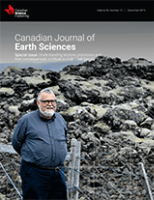
CANADIAN JOURNAL OF EARTH SCIENCES
Pioneering Research for a Deeper Understanding of Our PlanetCanadian Journal of Earth Sciences, published by Canadian Science Publishing, serves as a leading platform for the dissemination of cutting-edge research in the field of Earth and Planetary Sciences. Since its inception in 1968, the journal has contributed significantly to the advancement of knowledge through its rigorous peer-reviewed articles and has established itself within the Q2 category in Earth and Planetary Sciences, reflecting its strong academic reputation and research impact. With an impactful ranking of #87 out of 195 in Scopus, it is positioned within the 55th percentile, showcasing its relevance and quality in the scientific community. The journal caters to a diverse readership ranging from seasoned researchers to emerging scholars, providing vital insights into geoscience disciplines and fostering discussions on significant environmental issues. While it is not an open-access publication, the Canadian Journal of Earth Sciences remains committed to accessible research, ensuring that high-quality findings are shared widely within the Canadian and global scientific communities.
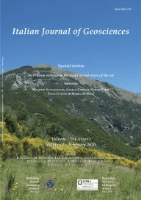
Italian Journal of Geosciences
Advancing Geosciences: Bridging Knowledge and InnovationItalian Journal of Geosciences, published by the Società Geologica Italiana, is a distinguished platform for the dissemination of research in the fields of Earth and Planetary Sciences and Geology. With an impressive impact factor reflected in its 2023 rankings, where it placed in the Q3 category across its related fields, this journal serves as a vital resource for academics, practitioners, and students. Established in 2010 and poised to continue until 2024, the journal showcases critical advancements and interdisciplinary studies that deepen our understanding of geological processes and Earth systems. Operating under open access options, it offers robust accessibility to a broad audience, facilitating wider dissemination of knowledge. The journal's affiliation with Università degli Studi La Sapienza in Rome, Italy, further underscores its commitment to academic excellence and innovation in geosciences.
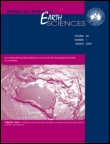
AUSTRALIAN JOURNAL OF EARTH SCIENCES
Advancing Knowledge in Geosciences and BeyondAustralian Journal of Earth Sciences, published by Taylor & Francis Ltd, has established itself as a leading journal in the field of Earth and Planetary Sciences since its inception in 1984. With an impactful reach reflected in its ranking as Q2 in the Earth and Planetary Sciences category, the journal contributes significantly to the advancement of knowledge through rigorous peer-reviewed research. While it is not Open Access, the journal ensures broad accessibility through institutional subscriptions and various academic platforms. With a commitment to covering diverse topics within the Earth sciences, including geosciences, geology, and environmental studies, the Australian Journal of Earth Sciences is an essential resource for researchers, professionals, and students seeking to deepen their understanding of the dynamic processes that shape our planet. Engaging with the journal means being part of a vibrant community that aspires to push the boundaries of scientific inquiry and innovation in Earth sciences.
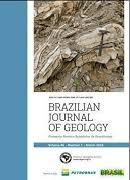
Brazilian Journal of Geology
Connecting Research and Real-World ApplicationsBrazilian Journal of Geology, the flagship publication of the SOC BRASILEIRA GEOLOGIA, has been a beacon of geoscientific research since its inception in 2013. With an ISSN of 2317-4889 and an E-ISSN of 2317-4692, this open-access journal has facilitated the dissemination of high-quality research across various branches of geosciences, making it freely accessible to a global audience since 2014. Hailing from Brazil, the journal proudly holds a Q2 ranking in Earth and Planetary Sciences as of 2023, and ranks #73 out of 195 in Scopus, indicating its growing impact and relevance in the field. The Brazilian Journal of Geology aims to bridge diverse geological studies with interdisciplinary approaches, promoting the understanding and application of geology in addressing contemporary scientific challenges. As it converges research from 2013 to 2024, the journal not only enriches the academic landscape but also serves as a vital resource for researchers, professionals, and students eager to explore the complexities of the Earth and its processes.
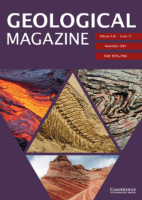
GEOLOGICAL MAGAZINE
Exploring the Depths of Geological KnowledgeGEOLOGICAL MAGAZINE, published by Cambridge University Press, is a premier journal in the field of geology, renowned for its rich legacy since 1864 and ongoing contributions to Earth and Planetary Sciences. With an impressive Q1 ranking in Geology and a Scopus rank of #70 out of 321 journals, it holds a significant position within the academic community, appealing to researchers, professionals, and students alike. The journal covers a wide array of topics, ensuring a comprehensive platform for the dissemination of cutting-edge geological research. Although it does not offer open access, it remains a vital resource for those seeking to stay abreast of advancements in the field. With an enduring commitment to quality, GEOLOGICAL MAGAZINE stands as an essential outlet for scholarly communication and serves as a catalyst for academic discourse within the geological sciences.

China Geology
Unveiling the Secrets of China's GeologyChina Geology, published by KEAI PUBLISHING LTD, is a leading open-access journal that serves as a pivotal platform for disseminating high-quality research across a wide spectrum of Earth sciences. Since its inception in 2018, the journal has rapidly established itself with an impressive Q1 ranking in multiple critical categories, including Geology, Economic Geology, and Oceanography, among others, reflecting its significant contribution to the academic community. Positioned as a top-tier journal in the Earth Planetary Sciences domain, it ranks #22 out of 321 in Geology and exhibits an admirable impact in sub-fields such as Earth-Surface Processes and Geochemistry and Petrology. China Geology is committed to promoting rigorous scientific inquiry and facilitating the open exchange of knowledge in the geosciences, making it an essential resource for researchers, professionals, and students eager to explore innovative developments and fundamental advances in geology. The journal’s accessibility ensures that critical findings reach a broad audience, thereby enhancing collaboration and driving forward scientific discourse in the global community.

ANNALES SOCIETATIS GEOLOGORUM POLONIAE
Exploring the Frontiers of Geology and Stratigraphy.ANNALES SOCIETATIS GEOLOGORUM POLONIAE is a distinguished journal published by the Polish Geological Society, focusing on pivotal research in the fields of geology, economic geology, and stratigraphy. With an ISSN of 0208-9068, this journal has established itself as an essential platform for disseminating significant findings and advancements in geological sciences since its convergence in 2008. The journal proudly holds a Q2 quartile ranking in the categories of Economic Geology, Geology, and Stratigraphy as of 2023, indicating its respectable position within the global academic community. Researchers will find its indexed status in Scopus, ranking #138/321 in Geology and showcasing a solid presence in key geological sub-disciplines. While the journal is not open access, it remains a vital resource for professionals and students striving for insight into contemporary geological research. Located in Krakow, Poland, the journal continues to contribute significantly to the understanding of geological processes and resources, making it an indispensable reference for anyone in the field.
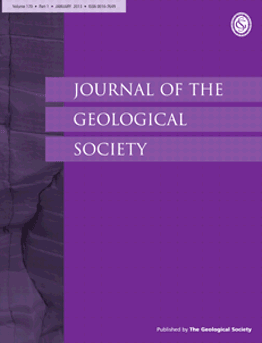
JOURNAL OF THE GEOLOGICAL SOCIETY
Advancing Geological Knowledge Since 1845JOURNAL OF THE GEOLOGICAL SOCIETY, published by GEOLOGICAL SOC PUBL HOUSE, is a premier academic journal dedicated to advancing the field of geology. With a rich history dating back to 1845 and continuously published until 2024, this journal caters to a diverse audience of researchers, professionals, and students involved in earth sciences. The journal is recognized for its high impact factor, situating it in the top Q1 category in the field of geology, as indicated by its impressive Scopus rank of #49 out of 321, positioning it at the 84th percentile in Earth and Planetary Sciences. This esteemed scholarly platform promotes rigorous peer-reviewed research, ensuring that novel findings contribute to the global geological discourse. Although it operates under a subscription model, the journal's archive offers valuable insights for anyone pursuing excellence in geological research. The JOURNAL OF THE GEOLOGICAL SOCIETY stands as a vital resource for disseminating scientific knowledge and fostering educational growth within the field.